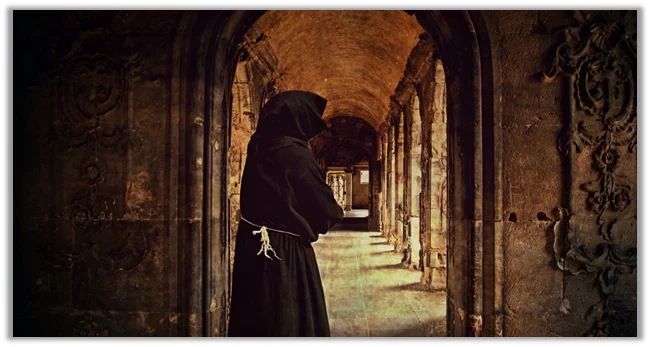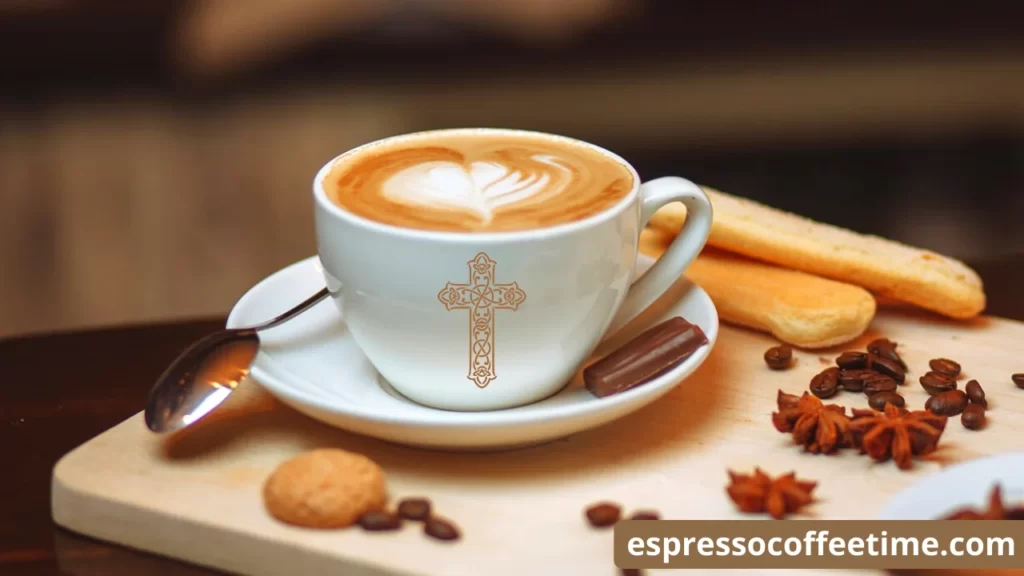Last Updated on October 12, 2022 by Timothy Byron Smith
Are you ready to uncover the divine roots of espresso? All espresso-based beverages have originated from someplace in the world. They were invented by someone somewhere in search of fantastic flavors and caffeine! But of all the varieties, which espresso drink is named for a religious order?
Having always considered yourself a pro of espresso and all things related to it, you might be finding yourself in a pickle at the moment. However, no need to fret. We’re here to answer all the questions for you. Hint: the drink’s name starts with a C and ends with an O!
You guessed it! It’s the cappuccino. Now let’s piece the history of this religious order drink.
Who Were Capuchin Friars?

Laughed at the name, didn’t you? Capuchin friars were an order of Franciscan monks. They were founded in Italy in the 16th century. These monks were known for a piece of clothing they always wore, their robe. It was plain brown and featured a pointed hood that hung down at the back.
In the year 1525, this group of monks was officially named the ‘Cappuccini.’ This name was derived from the Italian word ‘Cappuccio’ which no doubt meant ‘hood.’ Signifying their characteristic trait or piece of clothing that they were known for.
How Did the Cappuccino Get Its Name From the Capuchin Friars?
We’re already down to the word Cappuccio which resulted in Cappuccini – the new name for the group of Capuchin Friar monks. Very close to our cappuccino, right? This means we’re halfway there.
Well, once these monks came to be known as Cappuccini, the next thing noticed was the similarity between a beverage and the color of these monks’ robes. It was noticed, in the 20th century, how the beverage lightened to a light brown color using milk resembling the Capuchin monks’ robes.
As such, the beverage, as we all know it today, came to be known as our very cherished cappuccino. So, it’s true that the cappuccino is named after a brown robe.
A Brief History of Cappuccino
Our beloved cappuccino first graced the world with its existence in Italy. Before existing as the distinct coffee drink we know it as today, it had many different variants. It existed as the traditional Ottoman variant in the 17th century; a mixture of coffee and water was boiled with added sugar.
The Viennese style cappuccino emerged in the 1930s involving whipped cream and cinnamon or chocolate. It was the British who first began filtering coffee and this fashion reached France too! Later the steamed milk version appeared. Soon, espresso machines started making their way into the market and the cappuccino experience was completely transformed.
All these transformations have led to various versions and names of the cappuccino today. For instance, the Austrian menu highlights it as ‘Kapuziner.’ In other places, the cold cappuccino is known as cappuccino Freddo. Regardless of the name, it seems cappuccino has marked its territory worldwide.
The Etymology of the Word Cappuccino
Cappuccino refers to the ‘espresso coffee made with steamed milk’ which came about in Italy in 1948. The Italian cappuccino got its name from the Capuchin Friars whose robes had the same color as the cappuccino drink; plain brown.
The path of the name transformation followed the trajectory of Capuchin, Cappuccini (from the word Cappuccio meaning hood), and finally cappuccino. However, even though the word was invented back then, the cappuccino then did not come even slightly close to the cappuccino we’re used to today.
How has Cappuccino Evolved with Time?
Apart from its changing variants and different recipes of production, cappuccino has evolved significantly in its appearance. The biggest difference, in fact, between the modern-day cappuccino and the Italian-style cappuccino is in how they look.
The Italian cappuccino features a white foam kind of domes and is marked with a brown ring of espresso. On the contrary, our modern-day cappuccino is styled with various artworks. Not to mention, the Italian-style cappuccino is meant to be drunk quickly. But can we even think of not savoring our cappuccinos today? Pfft, no!
Conclusion
By now you must be awestruck to know the strange yet fascinating story behind the cappuccino. Isn’t it absolutely amazing to know that the drink doesn’t just taste grand but comes from an equally grand background! Monks and what not played a part in its history.
The bottom line is, this drink has traveled a long way to exist in a way that satisfies and pleases all coffee lovers. So, we only have to do it justice by savoring every last drop of the beautiful brown liquid. And while you’re at it don’t forget to quiz your friends on which espresso drink is named for a religious order?

